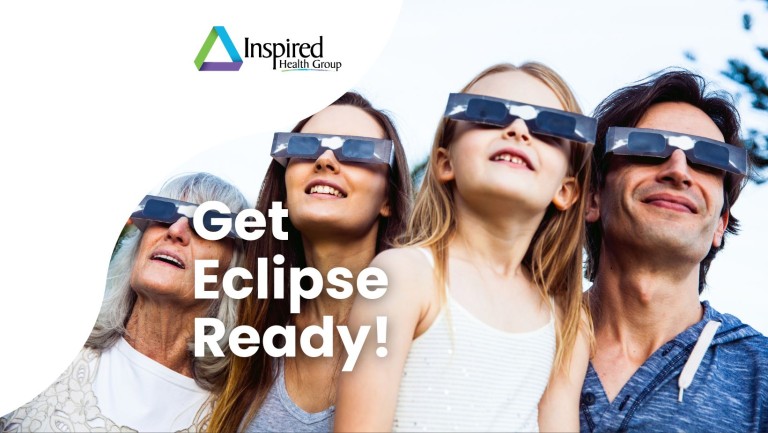On April 8, 2024 at 3:18pm, a spectacular natural phenomenon will be viewable in Western New York. Learn about the upcoming Full Solar Eclipse and how you can view it safely.
When is the next Solar Eclipse?
The next total solar eclipse will cross North America on April 8, 2024. Western New York is in the path of totality, meaning a full solar eclipse will be viewable.
What to Expect During a Full Solar Eclipse:
During a solar eclipse, the moon blocks the sun out of view. A full eclipse, known as totality, happens when the moon completely covers the sun. This spectacular phenomenon makes the entire area within the path of totality go dark. The light of day turns into a deep twilight sky. In WNY, totality will occur around 3:18 p.m. and last for just over three minutes. The sun’s outer atmosphere (called the solar corona) gradually appears, glowing like a halo around the moon in front of it. Bright stars and planets become more visible in the sky. It's possible for the outdoor temperate may drop a few degrees during a full eclipse.
Viewing a Full Solar Eclipse:
During — and only during — the 1-2 minute period when the moon completely covers the sun, you may remove your eye protection. It is important to put your eye protection back on before totality ends. The eclipse then becomes "partial" again for an hour as the moon moves away.
You must wear eye protection to look at the sun, during a partial eclipse or any other time.
Plan Ahead to Safely Watch the Solar Eclipse:
- Get a solar filter or eclipse glasses. Check your local library for eclipse glasses. The Buffalo Science Center also has glasses available
- Carefully look at your solar filter or eclipse glasses before using them. If you see any scratches or damage, do not use them.
- Always read and follow all directions that come with the solar filter or eclipse glasses. Help children to be sure they use handheld solar viewers and eclipse glasses correctly.
- Before looking up at the bright sun, cover your eyes with your eclipse glasses or solar viewer. After glancing at the sun, turn away and remove your filter. Do not remove your solar view or glasses while looking at the sun.
- The only time that you can look at the sun without a solar viewer or eclipse glasses is the several minutes during a total eclipse when the moon completely covers the sun’s bright face. As soon as the bright sun begins to reappear very slightly, immediately use your solar viewer or eclipse glasses again to watch the remaining partial phase of the eclipse.
- Never look at the uneclipsed or partially eclipsed sun through an unfiltered camera, telescope, binoculars or other similar devices. This is important even if you are wearing eclipse glasses or holding a solar viewer at the same time. The intense solar rays coming through these devices will damage the protective filter in your solar glasses and put your eyes at risk.
- Talk with an expert astronomer if you want to use a special solar filter with a camera, a telescope, binoculars or any other optical device.
Risks of Looking at the Sun without Protection
Looking at the sun without the right eye protection, for even a short time, can damage your retina permanently. It can even cause blindness, called solar retinopathy. Ordinary sunglasses, even very dark ones, and homemade filters are not safe for looking at the sun.
Learn More:
American Academy of Ophthalmology

